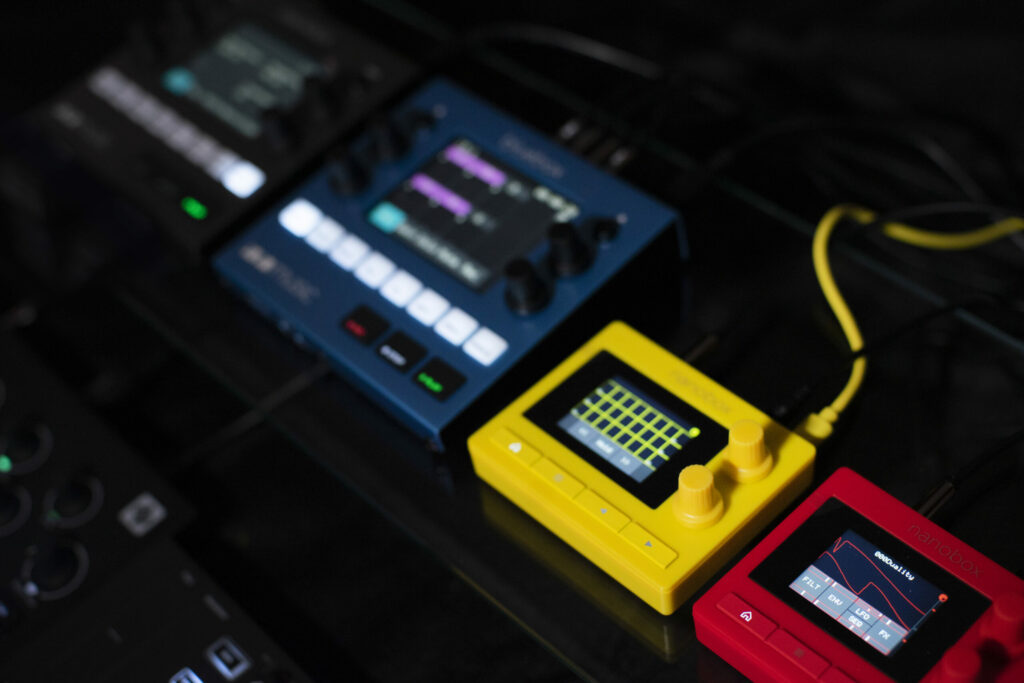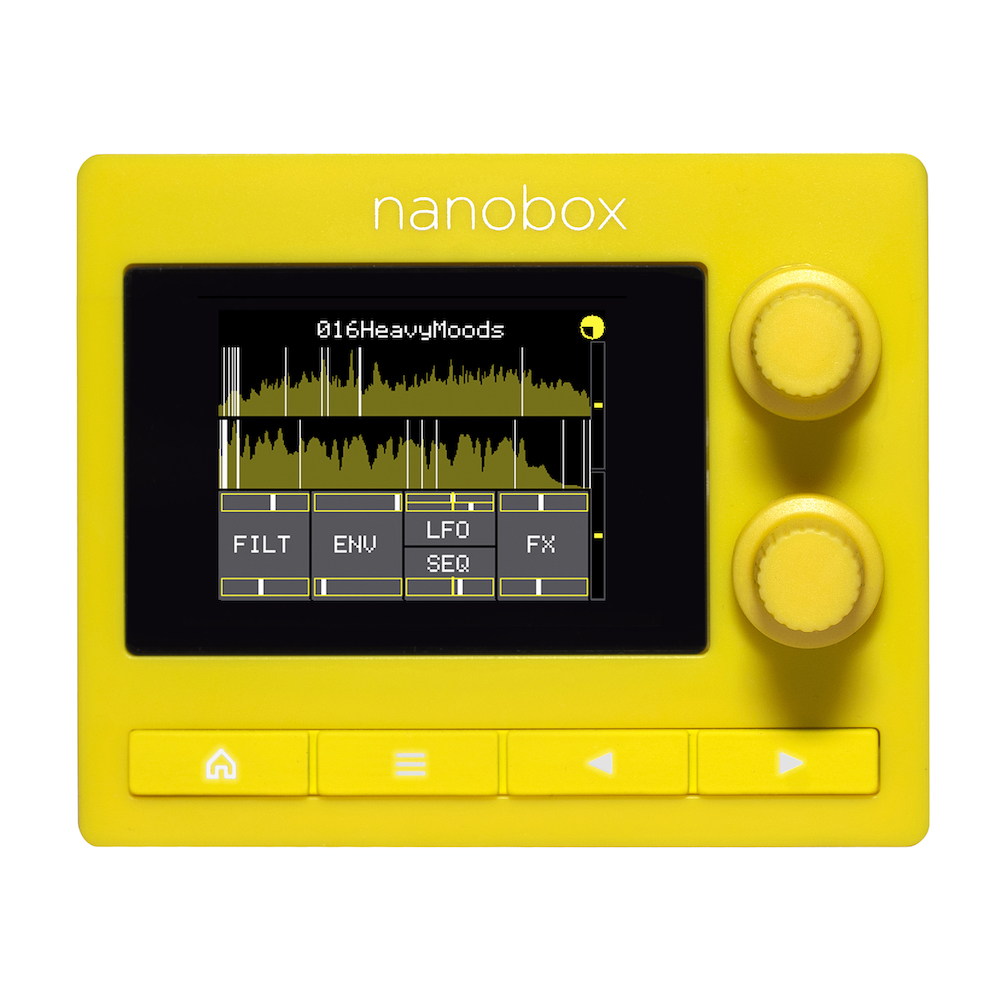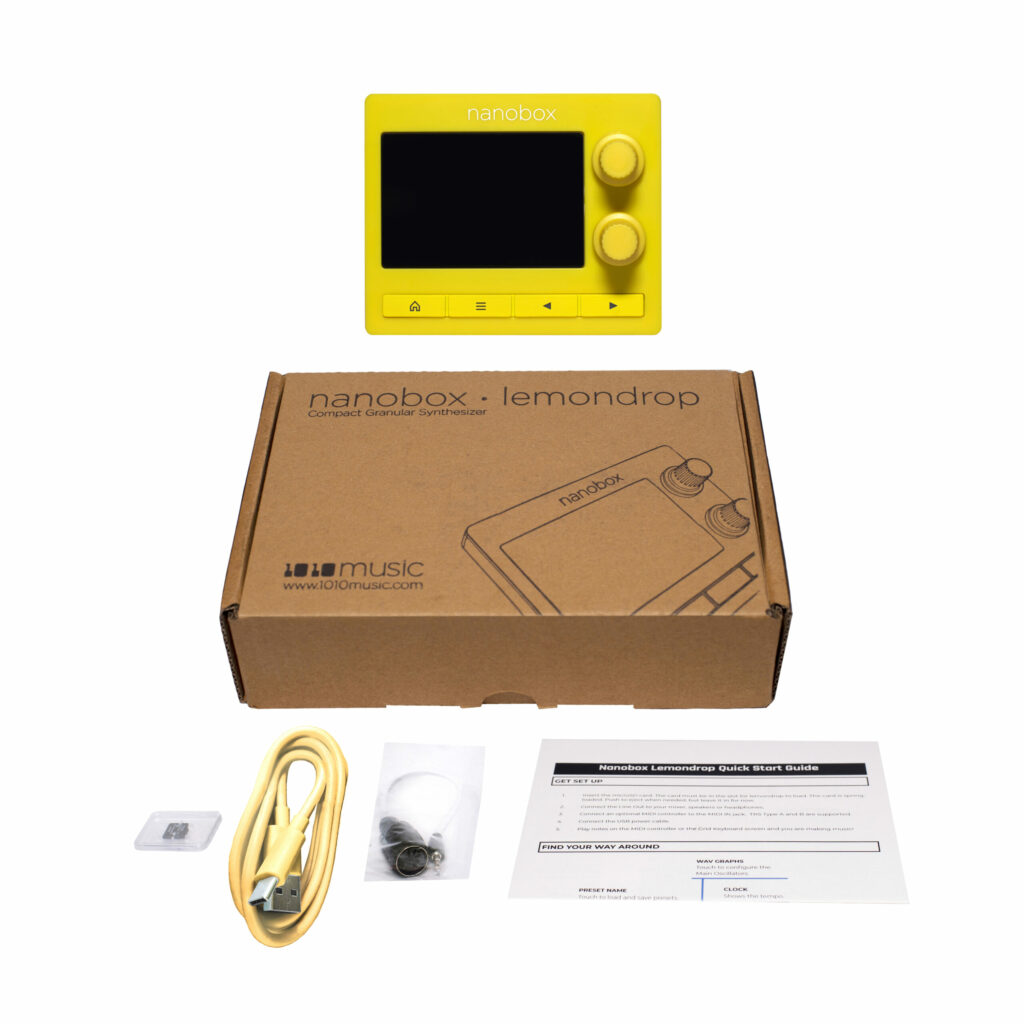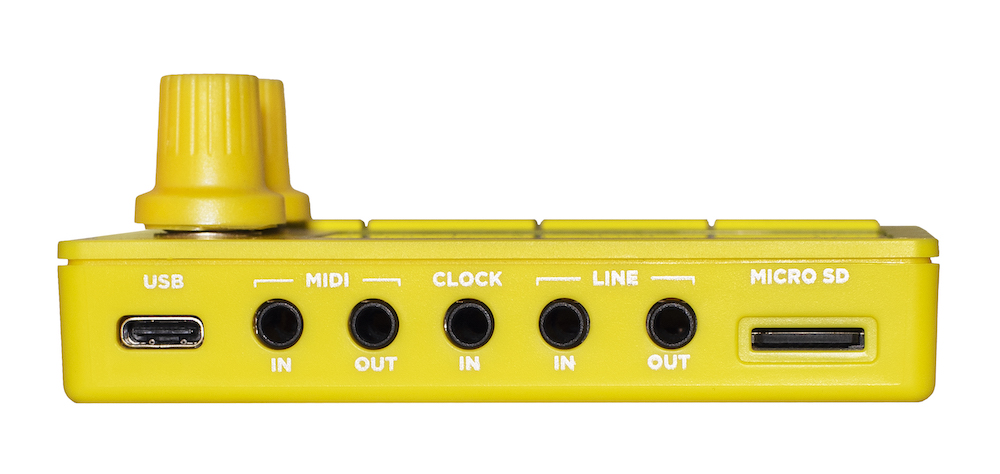1010music’s tiny, colourful new synths offer contrasting flavours. The yellow one is a tiny granular synth which packs a punch.

New from 1010music, the Nanobox series surely counts as one of the smallest synth ranges in the world. That’s not to say there aren’t many in the series – there are two so far, with more likely to follow – but more a comment on their sheer physical size The Nanobox Lemondrop is a polyphonic granular synth, while the Nanobox Fireball is a polyphonic wavetable synth, and both are tiny. Here we take a first look at the Nanobox Lemondrop. (You can read our full review of the Nanobox Fireball here.)
We’re big fans of 1010music’s Bluebox and Blackox units, which are a compact mixer/recorder and ‘sampling studio’ respectively. They’re both incredibly small. The Nanoboxes are even smaller. We’re talking roughly half the size of a smartphone here, and still packing in a huge amount of creative potential. The format of the Nanoboxes is unusual among serious synths, but the setup is reassuringly comprehensive despite the size: there’s a good colour touchscreen which dominates the front panel, plus four push-button switches and two rotary knobs to access parameters and adjust settings. Round the back, you’ll find a USB socket which provides power, five 3.5mm sockets for MIDI in/out, analogue clock and line in/out, plus a microSD card slot. MIDI in and out are via USB or adapters which plug into 3.5mm sockets on the back of the unit (it’s worth noting that there’s only one adapter included in the box.

Granular synthesis is all about taking an audio recording and using tiny parts of the waveform (‘granules’) to create new sounds. It’s a powerful approach to creating sounds which blur the lines between recordings of ‘real’ sounds and entirely new, synthesised sounds, but it relies entirely on the way it’s implemented to make it user-friendly and intuitive. 1010music describe the Lemondrop as an intuitive synth, which is good news; getting started with the Lemondrop is reassuringly easy. With the unit powered up and connected to a MIDI keyboard, it’s surprisingly quick to find your way around the synth architecture, with two granular oscillators plus a wave oscillator. The four switches have a smooth, rubbery feel to them but a nice, positive click when pressed. Combined with the two rotary knobs and the fairly small but clear touchscreen, the Nanobox proves to have enough hands-on control to make navigation simple.

The sound itself is anything you want it to be, depending on what kind of waveforms you feed into it and which direction you push the synth engine. There’s a microSD card included in the box with more than 300 waves and presets to get you started, but the Lemondrop is a synth which is really designed to reward those who put in the effort to make it their own; fire up your own custom waveforms and you’ll get the most out of this little powerhouse. The two granular oscillators are the main focus here, giving you the option to blend and warp sound samples into everything from thick, juicy bass sounds to delicate, ethereal pads. The virtual-analogue-style wave oscillator is more for thickening the sound and reinforcing timbres than being the star of the show. The dual filter section allows you to refine and sculpt the sound to taste.
You can play the Lemondrop using an on-screen grid keyboard, but to get the most out of it we’d suggest controlling it over MIDI via a keyboard, sequencer or DAW. With patterns programmed remotely, you can then use the touchscreen to control synth parameters; an X-Y pad option allows you to take hands-on control of a patch, which is a nice performance option to add real-time flavour to a sound. On a similar note, the built-in effects and granular synthesis engine also work in real-time with the line input, allowing the Lemondrop to work as a unique effects unit.

The only real drawbacks of the Lemonball are those which are inherent to micro-sized instruments like this. Most notably, the limited number of physical controls mean that the editing process is inherently compromised when compared to what you’d get with a one-knob-per-function synth or a full-sized digital instrument like, for example, the ASM Hydrasynth. That’s a trade-off which is almost certainly worth it in this case, given that you’re getting a genuinely powerful synth in a tiny format. The Lemondrop is creatively inspiring, compact and portable, plus reasonably priced for a synth with a huge amount of potential.
Greg Scarth
More info/buy